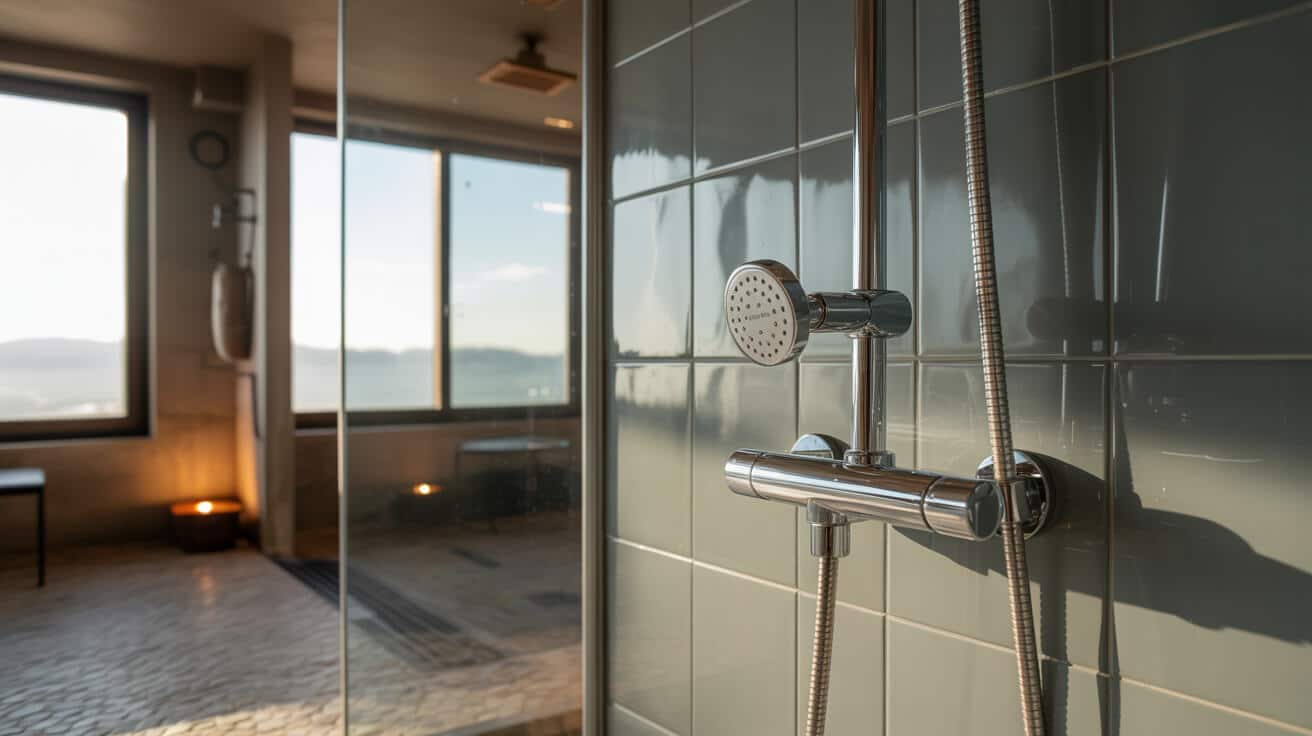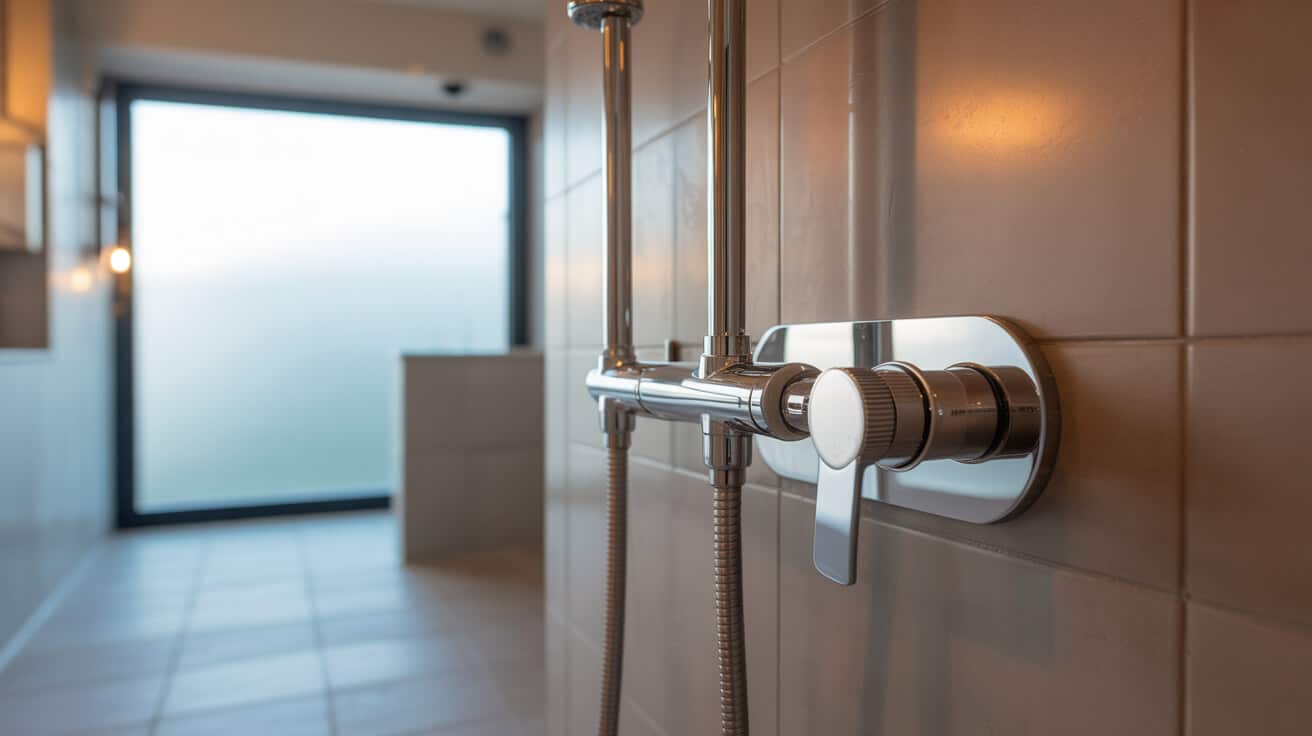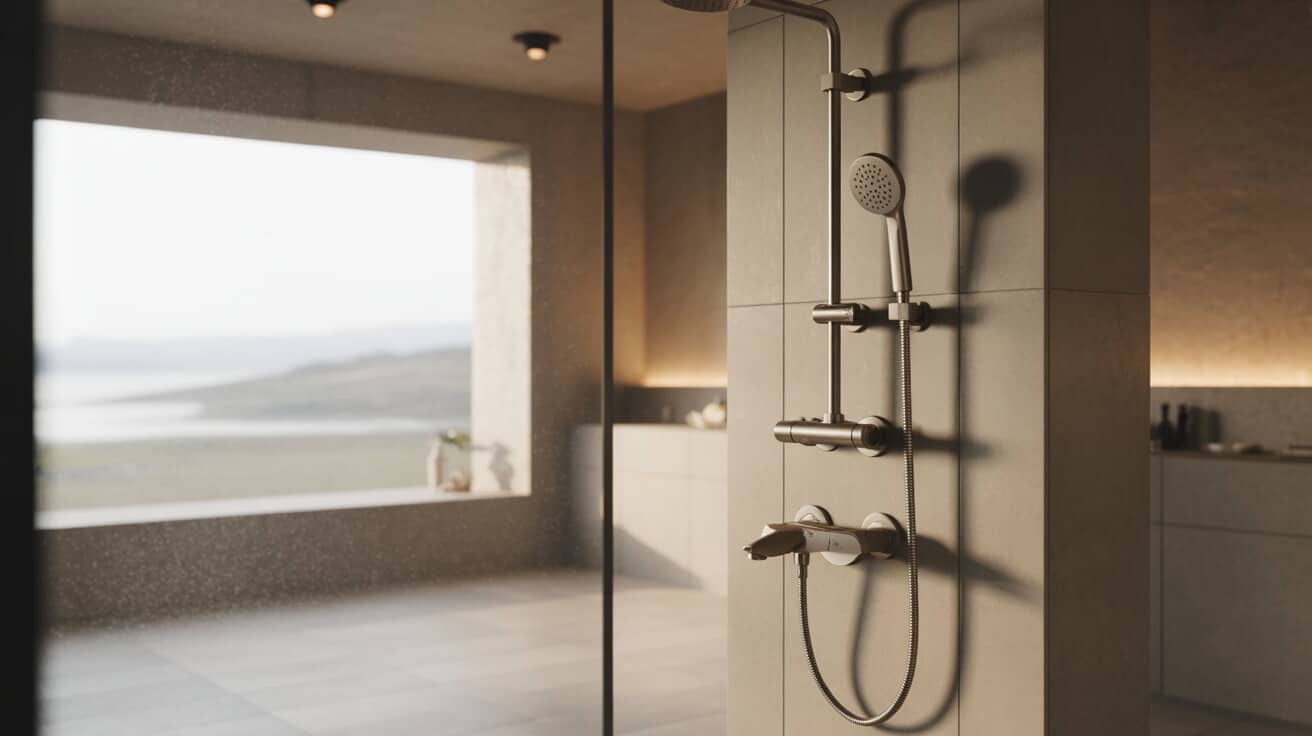The adoption of thermostatic shower technology marks a significant progression in the intersection of safety, regulatory compliance, and end-user comfort within the plumbing and heating industry. Consistently reliable hot water delivery is not simply a matter of convenience—it represents a direct safeguarding of occupant health and wellbeing. Property owners and facilities managers have recognised that integrating thermostatic devices into your infrastructure not only minimises risk but can also satisfy evolving legal duties for tenant and guest protection.
At the core of successful installation, your company’s approach must be thorough, methodical, and aligned to both market requirements and legislative standards. Through careful device selection, rigorous installation protocols, and ongoing maintenance regimens, your organisation can create environments where every shower experience is both pleasurable and secure. Plumbers 4U, as a sector exemplar, exemplifies these principles and emphasises detail throughout each phase of service delivery.
Etymology or Name Origin
Thermostatic derives from “thermo,” meaning heat, and “stat,” derived from “statikos”—to make stand still. This linguistic ancestry directly reflects the mechanical role of thermostatic devices: they act to “hold” water at a specified temperature, regardless of the shifting dynamics of plumbing systems or thermal input. Earlier generations of plumbing design relied on basic mixers, whose efficacy depended entirely on user control and water supply steadiness.
The vocabulary of contemporary plumbing references “thermostatic mixing valve” (TMV), codified into certifications like TMV2 (domestic) and TMV3 (commercial and safety focused environments). Each term specifies not just a device, but a class of safety-engineered controls, and a paradigm shift toward precise, automated regulation.
Overview / Context
Thermostatic shower systems are designed to deliver meticulously regulated water temperatures, responding in real-time to fluctuations in supply pressure, user demand elsewhere in your property, or transient faults in the feed. The system’s core is the thermostatic mixing valve, engineered to blend water streams and sense variations instantly, preventing dangerous surges or chilling.
All installations are contextually shaped by the property’s infrastructure: different supply pressures, legacy or modern pipework, and the presence of advanced water heating technologies. Specialised plumbing firms such as Plumbers 4U adapt your system layout and valve selection to your unique requirements, emphasising safety, convenience, and lifetime performance.
Contemporary installations may be retrofit upgrades to legacy housing stock, compliance-mandated replacements in the rental sector, or specified components in high-end newbuild designs prioritising user wellbeing and legal conformity.
History
Origins
In pre-modern plumbing systems, showers and taps operated via discrete hot and cold controls, placing full responsibility for temperature stability on the user. Scalding and thermal shock were frequent, particularly in facilities where water demand fluctuated across multiple outlets or tenants. This created latent hazards for your building’s users—especially children, the elderly, or those with limited mobility.
Industrial emergence
The late 20th century saw the widespread adoption of mixer valves equipped with temperature-reactive elements: wax capsules or bi-metallic strips which respond physically to temperature changes. First introduced in industrial and high-risk environments—hospitals, care homes, and hospitality buildings—they provided rapid, automatic reaction to water supply interruptions or imbalance. With British and European standards solidifying the use of thermostatic controls, property owners and managers began specifying such devices in their building maintenance and compliance protocols.
Contemporary evolution
Modern thermostatic systems integrate digital logic, fine-mesh filtration, and pressure balancing, vastly increasing reliability and user control. Devices are subject to rigorous third-party testing under standards such as TMV2 and TMV3, which regulate performance in domestic, public, and institutional settings. Providers like Plumbers 4U ensure your installation fulfils recent legislative obligations, with documentation and traceability from installation to annual service.

Concept / Description
A thermostatic shower system is a composite of mechanical and hydraulic components, configured to maintain output temperature at a pre-set level regardless of variability in the hot or cold water supply.
Core principles
A TMV contains a sensitive cartridge that physically expands or contracts in response to temperature change, operating a balancing mechanism to vary the proportion of hot and cold water reaching the outlet. If a feed drops out (most commonly cold), an internal fail-safe instantly closes off flow, preventing exposure to the undiluted hot supply. Advanced systems can also compensate for pressure fluctuation, maintaining both temperature and flow.
Components and system features
- Valve body: Houses the TMV cartridge, constructed for both concealed and exposed installations.
- Blending cartridge: Temperature-sensitive mechanism at the system’s core, responsible for sensing and correcting deviations.
- Non-return (check) valves: Prevent cross-backflow between hot and cold supplies, maintaining separation of potable sources.
- Isolation valves: Facilitate easy maintenance, repair, or emergency intervention.
- User interface: May employ single lever, dual control dials, or digital settings for adjusting flow and temperature.
- Philtre elements: Guard against debris entering sensitive valve innards, prolonging device lifespan.
- Pressure governors: Essential in properties where system pressure is unbalanced or may fluctuate.
System integration
Successful installation depends on matching the selected device to your property’s water supply type (gravity-fed, unvented, combi-boiler). Concealed installations require accurate wall preparation and pipe positioning, while exposed models can be surface-mounted, simplifying both access and future service. All installations require rigorous leak, flow, and temperature testing before client sign-off.
Functionality / Purpose / Applications
Temperature regulation
Thermostatic systems manage the dynamic interface between hot and cold inlets, continuously reassessing conditions and adjusting internal settings to produce a stable, predictable temperature at the showerhead. This regulation is vital in properties where pressures or feed temperatures might vary, such as older residential plumbing or larger commercial premises.
Safety and anti-scald protection
By automatically limiting output temperature and providing fail-safe cutoffs, thermostatic showers provide a significant reduction in accidental scalding incidents—a primary regulatory and ethical concern in environments predominantly (but not exclusively) occupied by vulnerable individuals.
Usage scenarios
- Domestic environments: Used in bathroom renovations, new-builds, or compliance-driven upgrades, ensuring safety and comfort for your household.
- Rentals and multi-tenant dwellings: Key in meeting landlord obligations for providing safe washing facilities and facilitating certification during property inspections.
- Clinical and institutional settings: Required under TMV3 for care homes, hospitals, and schools, protecting diverse user populations.
- Commercial buildings: Increasingly installed in hotels, health clubs, and sports facilities for guest welfare and reputational risk management.
Trade process improvement
For your organisation’s engineers, standardised thermostatic systems enable precise, repeatable service delivery and simplify annual maintenance or certification, minimising service interruption and legal exposure.
Classifications / Types / Variants
By control type
- Manual mixers: Blend water to user preference but lack autonomous regulation, exposing customers to variable supply risk.
- Mechanical TMVs: Provide automatic temperature control using a physical, typically wax-based, cartridge sensitive to water conditions.
- Digital thermostatic systems: Use electronic sensors and microprocessor logic to achieve continuous fine control, sometimes with programmable temperature presets.
By compliance standard
- TMV2: Certified for mainstream domestic and residential use, balancing practicality with occupant risk factors.
- TMV3: Enforced for healthcare, education, and sectors where users may be especially susceptible to burns or shock—your organisation’s compliance here is routinely scrutinised.
- WRAS approval: Recognises both device and installation integrity, confirming compatibility with public mains.
By system configuration
- Concealed valve: Valve and pipework are hidden within the wall for a streamlined appearance, demanding higher precision at instal.
- Exposed valve: Unit is wall-mounted, often on surface pipework, facilitating maintenance and retrofits.
- Pre-plumbed modular units: Deployed in environments such as hotel or student accommodations for standardised, rapid installations.
Systems / Tools / Methodologies
Core tools and materials
Installation requires access to:
- Pipes and fittings: Copper for rigidity and legacy compatibility, PEX for flexibility and simple routing, supported by appropriate compression, solder, or push-fit joints.
- Pressure and flow test gauges: Confirm system parameters align to device specification before fitting.
- Sealants and tapes: PTFE, silicone, and ancillary products ensure leak-free performance.
- Fixings: Robust brackets and wall plates anchor valves for long-term reliability.
Installation methodology
- Survey water system type and measure available feed pressures.
- Identify supply orientation and plan appropriate pipe routing.
- Isolate mains and drain existing supply as needed, employing safe working protocols.
- Cut, fit, and assemble pipework per manufacturer tolerances, avoiding unnecessary bends or junction stress points.
- Instal TMV per the device’s labelled inlets, securing with robust fixings and leak-proof connections.
- Introduce water supply gradually, checking for leakage and testing for crossfeed.
- Adjust blending settings and document temperature output, referencing regulatory or brand-specific thresholds.
- Reinstate wall finishes or trim, if concealed.
- Document installation, update property compliance register, and provide your customers/user with accessible operation and maintenance instruction.

Stakeholders / Entities Involved
Service providers
- Plumbing and heating engineers: Directly responsible for system diagnosis, installation, safety confirmation, and client support.
- Compliance officers/building inspectors: Validate adherence to regional and national codes, providing independent signoff.
- Facilities managers: Oversee long-term performance, ensure regular checks, and drive continuous improvement in installation outcomes.
Clients
- Homeowners: Seek optimal mix of comfort, utility, and safety for loved ones.
- Landlords and letting agents: Prioritise risk minimization and legal conformity, seeking reduced downtime through rapid response or planned maintenance agreements.
- Property/facility directors: Manage compliance and user satisfaction at scale, often across multi-building portfolios.
- Supported-living providers: Rely on robust, verifiable anti-scald provision to ensure asset standards support safeguarding guidelines.
Regulatory and trade bodies
- WRAS: Standardises assessment of plumbing fittings and system contamination prevention.
- TMV2/TMV3 certifiers: Issue performance and safety certification to approved products and installations.
- Manufacturers: Responsible for design evolution, documentation, technical support, and warranty.
Legal / Regulatory / Ethical Considerations
National and local standards
- Building Regs Part G: Requires all new and renovated bathrooms to fit temperature control devices. Your compliance with these standards directly impacts property insurance, tenant law, and asset reputation.
- TMV2/TMV3: Defines the level of risk management and device performance for domestic and non-domestic sectors, with your company subject to actionable enforcement.
- WRAS: Mandates all plumbing products not endanger potable supply or breach public network integrity.
Documentation and recordkeeping
Responsibility for producing, maintaining, and sharing proof of installation and maintenance rests with the property manager or owner. For landlords, this includes registering annual or periodic inspections and service dates. Firms such as Plumbers 4U maintain detailed audit trails, warranty paperwork, and operation manuals for customer use.
Ethical and duty of care
Failings in installation, maintenance, or documentation can present direct harm to your tenants or end users, exposing your organisation to liability and reputational damage. Proactive, traceable action mitigates these risks and demonstrates your social responsibility as a provider.
Performance Metrics / Data / Measurements
Key performance indicators
- Response time: Maximum interval allowed between a sudden supply change and restored steady output.
- Flow rate: Volume delivered at designated outlet per minute, usually tested at various input pressures.
- Service cycles: Number of operating cycles before degradation in performance; durability is key in high-use installations.
- Safety auto-shutoff effectiveness: Validation that the valve closes or reduces flow to safe levels should cold or hot water loss occur.
Quality assurance processes
Routine performance checks, as required by your business compliance programme, should include rigorous, repeatable logging of test outputs, with digital or tamper-proof physical records. Systemic performance failures are analysed and remediated by your contracted maintenance organisation.
Table: Typical TMV Performance Benchmarks
| Metric | Typical Value | Regulatory Minimum |
|---|---|---|
| Response time (to 10°C jump) | < 2 seconds | < 3 seconds |
| Max outlet temp (TMV setpoint) | 38–41°C (domestic default) | 43°C |
| Flow rate (3 bar input) | 8–15 litres per minute | Device set |
| Service interval (annual) | 1 year | 1 year |
Challenges / Barriers / Limitations
Technical issues
- Supply compatibility: Gravity-fed systems may lack sufficient pressure for optimal TMV operation. Your solution is to specify correct product or supplement with pump/booster technology where necessary.
- Pressure imbalance: Discrepancies between hot and cold feeds—often present in larger properties—can impair mixing valve control, necessitating pressure-reducing valves or equalisation loops.
- Sediment and limescale: Build-up degrades valve performance and accelerates failure, increasing your maintenance costs and system downtime.
Social and economic factors
- Budget constraints: Cost can deter immediate adoption, especially in older assets or social housing, where upgrade funds are limited.
- Awareness: Not all owners or users recognise latent dangers of manual or outdated valves, underscoring a need for ongoing education and transparent guidance.
Physical limitations
- Retrofit complexity: Fitting modern valves in heritage, listed, or heavily-used assets may be intrusive, time-consuming, and demand master-level plumbing skills.
- Space restrictions: Concealed installations demand high-precision wall work and clearances.
Impact / Influence / Legacy
Reducing injury and liability
The widespread adoption of thermostatic technology has measurably reduced incidents of accidental scalding in homes, hospitals, and educational settings. This shift represents not merely an improvement in outcomes, but a transformation in normative standards of asset safety and care.
Cultural shift in compliance
Thermostatic systems are now anticipated by your tenants, guests, and regulatory bodies alike. They are no longer luxury apparel, but integral to responsible asset ownership and management. Ongoing compliance has become process-driven, with companies such as Plumbers 4U evolving maintenance and documentation practices to exceed evolving standards.
Asset value and operational excellence
Properties boasting compliant, well-documented thermostatic installations are distinctly positioned in the market. They carry increased insurance preference, reduced risk loading, and demonstrable asset integrity.
Future directions, cultural relevance, and design discourse
Technological progression
The next era of thermostatic devices will blend analogue mechanical precision with digital intelligence, unlocking granular user control, personalised presets, and proactive maintenance alerts. Researchers and manufacturers continue refining anti-limescale, maintenance-free systems, driven by material science and sensor integration.
Regulation expansion
Best-practice is progressively moving towards universal coverage—not only in bathrooms or risk-assessed areas, but across all mixed-use and residential assets, irrespective of user need profile. Training requirements for your workforce are evolving in kind.
Societal expectation and cultural meaning
The modern shower—specifically, one shielded by thermostatic intelligence—represents the intersection of dignity, comfort, and managed risk. Installers, property managers, and product designers are increasingly centering your needs as both a practical and symbolic driver for system advancement, setting new norms for safety, accountability, and the user experience.

